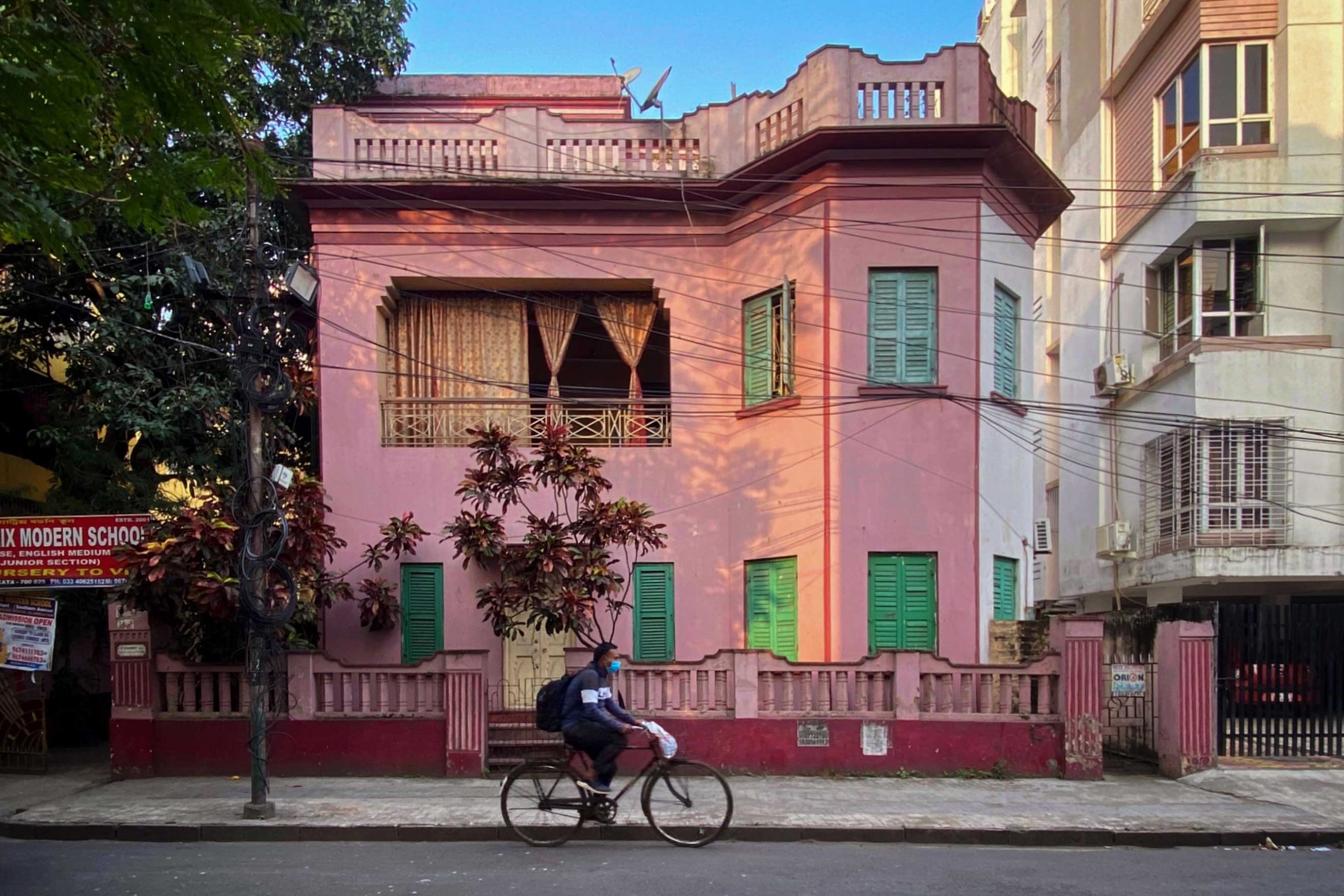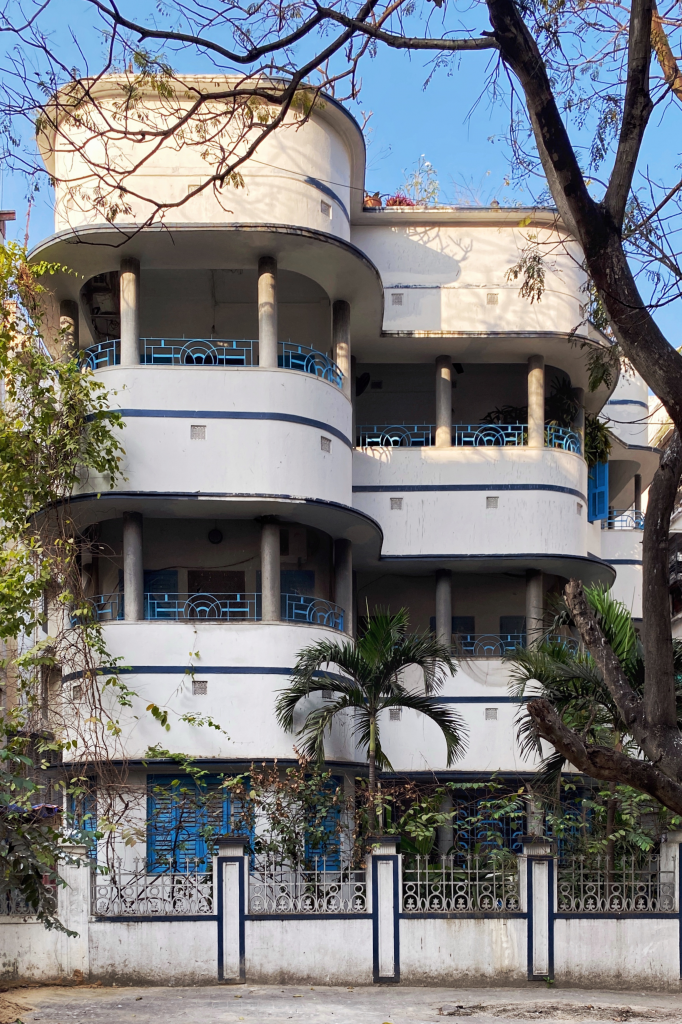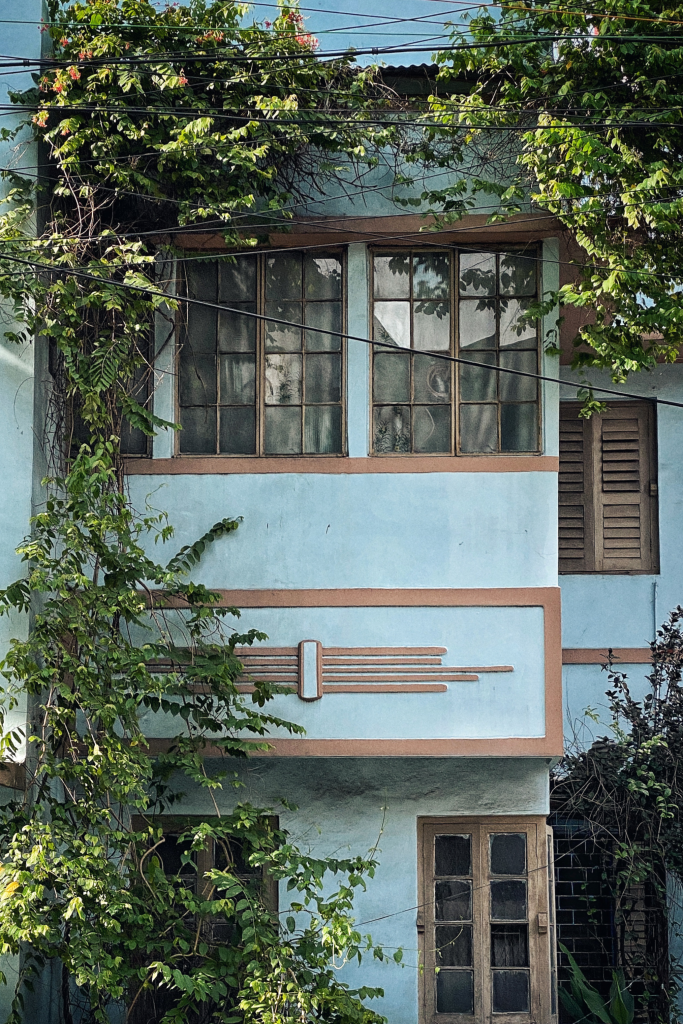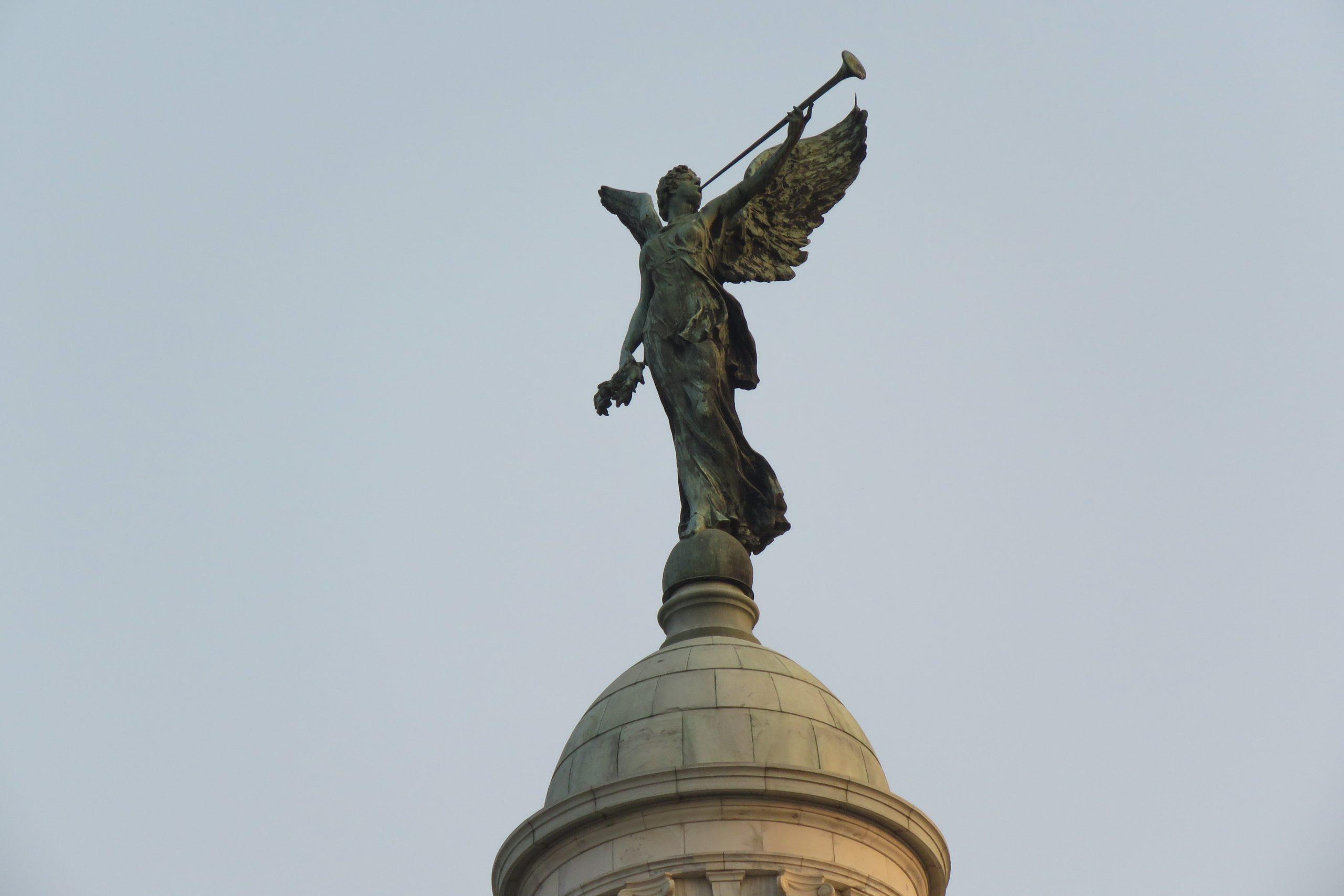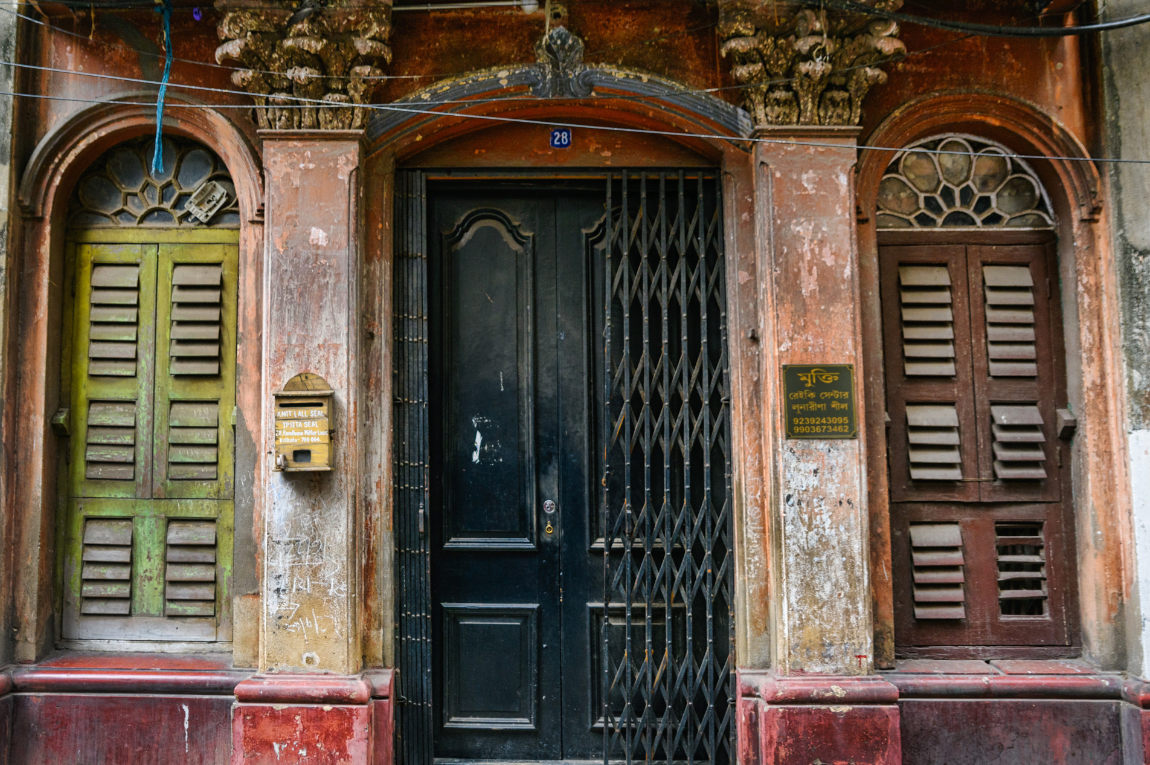Tucked away on a street just off Gariahat Road in South Kolkata is the former home of music composer Sachin Dev Burman and his son, the prolific Rahul Dev Burman. The house was built by the former in 1944, shortly before India’s Independence. Two years ago, on the occasion of RD Burman’s 82nd birth anniversary, the street was renamed Sangeet Sarani in the father-son duo’s memory. To locals, however, it still remains South End Park.
Most evenings I start here — not quite as homage but out of habit — and then meander through the neighbourhood, looking at houses on the pretext of a walk. Though now rundown, the Burmans’ two-storeyed home, with its circular balcony and whimsical, triple-banded parapet, is still a fine display of a style informally described as South Kolkata Art Deco. Almost all the houses along my route present large, curved, open verandahs; patterned cast-iron railings and gates; lattice details along cornices; long, vertical glass windows along stairwells; and double-layered shuttered French windows. Some have porthole windows, a porch with stairs leading up to a main door and, often, an abstract sunrise motif on the facade.
By no means are these houses — or this style — confined to the neighbourhoods I shuffle through: South End Park, Southern Avenue, Lake Terrace, Keyatala and Purna Das Road. But they offer, I think, good introductory lessons to the erstwhile trend.
Perhaps my fascination with these structures rests on the fact that, from my very first encounter with them as a schoolgirl, I have only ever seen them from the outside. Being an outsider has its advantages — among them are the appreciation of how little you know and the zeal to learn more. This made me sign up for a guided walking tour of the locality with a friend earlier this year.
The emergence of Art Deco buildings in this part of Kolkata, about 1940s onwards, coincided with a building boom, our guide told us. Many were moving from the older northern parts of the city to the newly developing south (the ‘outskirts’ then). Others were moving into the city from across the border after Partition. Several of these parties settled in what is now Southern Avenue, a planned neighbourhood that was developed as a residential district by the Calcutta Improvement Trust starting the 1920s.
In choosing to be here, the new residents were already stepping away from the older identity of the city. It was unsurprising then that they didn’t want to build houses on the lines of the sprawling zamindari mansions of old Calcutta. Sure, such homes were perhaps beyond their means, but times had also changed. The needs and desires of the new residents — many of them doctors, barristers and engineers — were likely impacted by the changing times and the icons of the modern world.
In mid-century Calcutta, such icons included cinema and cinema halls. The first among these, Metro Cinema Hall, built by the American production company Metro Goldwyn Mayer in 1935, was especially fashionable. With its cascading columns, grand staircases and coveted status among the city elites, it became a symbol of aspiration for the new middle-class Bengalis. In their search for an aesthetic for their homes, many of them appear to have turned to it as a reference. The term Metro-bari (literally ‘Metro House’) soon became shorthand for a style template in the city. It was put to good use by the civil engineers who designed most of these houses. Neighbours clearly took design inspiration from each other, which lent whole neighbourhoods a distinctly cohesive appearance.
A good many of the houses are still in decent shape, but entropy is an inevitable beast. What time hasn’t yet rot has been dealt blows by rising maintenance costs, increasing outward movement from the city, an aging population and rapacious land developers. So, houses keep coming down. New boxy apartments appear as if overnight. Lately, every street has also been swallowed by Pinterest-friendly cafes and boho-chic boutiques. But, as author Amit Chaudhuri had suggested, perhaps the gentrification of these already upscale neighbourhoods is still a better option than the complete obliteration of their built environment. In 2015, Chaudhuri had started a pressure group, Calcutta Architectural Legacies, to help preserve the Art Deco houses in South Kolkata. Others, like Calcutta Houses on Instagram, have taken up a similar task through photographic documentation.
As we walked back after the tour, we stopped at a recently emptied plot arguing about what had stood there before. “Taking pictures of houses,” Manish Golder of Calcutta Houses had once told me, “is like taking portraits of the people you love. You do it so you don’t forget them when they are gone.” There is still so much we can forget, I thought.
Our selection of stays across India, best visited for their design and style. Check in
Parni Ray lives between places and writes for a living. She has written for The Indian Quarterly, The Caravan, The Hindu, Biblio and The Calvert Journal. Although seldom at home, her home is in Kolkata. She is on Instagram at @parniray.
Manish Golder is an entrepreneur, photographer and filmmaker. He is co-founder and owner of the Calcutta Houses Instagram project.
